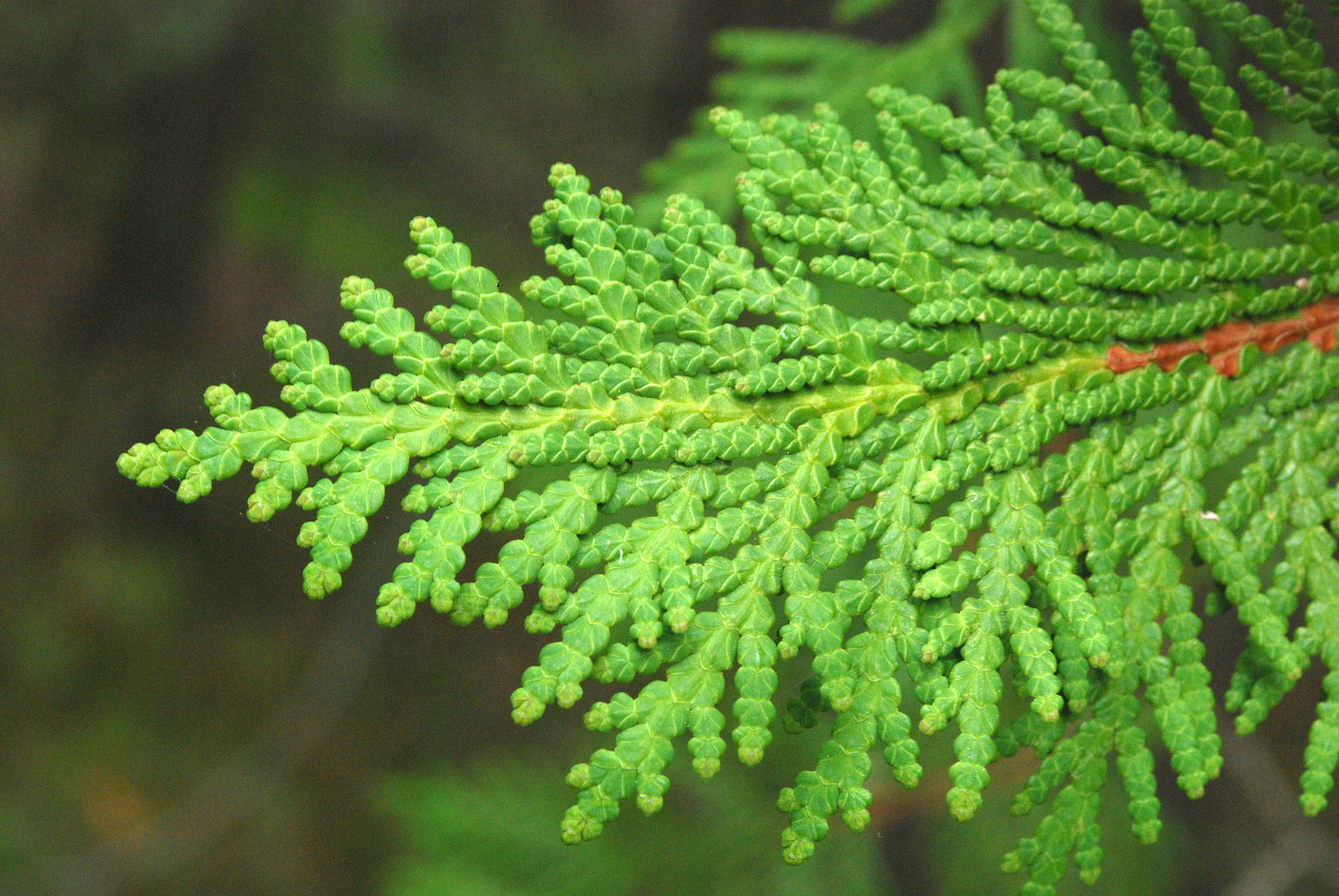Thuja occidentalis
It is only a small or medium-sized tree, growing to a height of 15 m (49 ft) tall with a 0.9 m (3.0 ft) trunk diameter, exceptionally to 38 metres (125 ft) tall and 1.8 metres (5.9 ft) diameter. The tree is often stunted or prostrate in less favorable locations. The bark is red-brown, furrowed and peels in narrow, longitudinal strips. Northern white cedar has fan-like branches and scaly leaves. The foliage forms in flat sprays with scale-like leaves 3–5 millimetres (1⁄8–3⁄16 in) long.The seed cones are slender, yellow-green, ripening to brown, 9–14 millimetres (3⁄8–9⁄16 in) long and 4–5 millimetres (5⁄32–3⁄16 in) broad,[citation needed] with six to eight overlapping scales. They contain about eight seeds each. The branches may take root if the tree falls.
- Family: Cupressaceae
- Habit: Coniferous plant
- Habitat: Calcareous substrates, and swamps with neutral to basic pH (5.5 - 7.2)
- Status : Common
Vernacular names
- Eastern Arborvitae
- White Cedar
- Cupressus arborvitae.
- Thuja obtusa.
- Thuja odorata.
- Thuja procera.
- Thuja theophrastii
Medicinal Uses
- Rheumatism, gout, chronic pain, as an insecticide, bacterial skin infections such as herpes simplex, warts, in combined preparations, especially for inflammatory diseases of the respiratory tract and for the common cold..
- Thuja also has antibacterial and antifungal properties, and recent studies have shown that it can stimulate the immune system. Given its many medicinal uses, it is no wonder that this evergreen has been known for centuries as the tree of life.
- Thuja Occidentalis is sacred to the Ojibwe people, which are among the most numerous indigenous peoples found north of Rio Grande. The Ojibwe call it the Grandmother Cedar and they have listed it as one of the four major plants of their medicinal wheel.
- A decoction made from leaves and twigs was used to treat cough, fever, and even venereal diseases. Nowadays this tree is still being used to treat warts, polyps, bronchitis, and other respiratory diseases.
